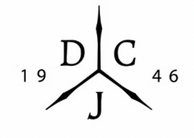
fine & rare: natural diamonds
D.C. Johnson only procures natural diamonds. More than a symbol of love—a natural diamond is a timeless heirloom to be cherished for generations. While you may be tempted by a lab grown synthetic stone, these "diamonds" are grown in a machine rather than in Mother Earth. Some sources estimate that it takes 1 to 3.5 billion years for a natural diamond to form underground, hence their rarity and value.
Natural diamonds are timeless treasures, embodying the love and commitment of today, with a legacy to be cherished and passed down through generations.
the basics
Every diamond is unique. But all diamonds share certain features. These are called the 4 C's of Diamonds and allow you to compare and evaluate a diamond's characteristics. This grading system was founded by Robert Shipley, who was the founder of the GIA (Gemological Institute of America)
D.C. Johnson only offers GIA certified diamonds. This refers to diamonds that have undergone GIA’s rigorous grading process and to the reports that accompany them.
The 4Cs include
Carot weight
Color grade
Clarity grade
Cut grade

Carot weight
Carot weight refers to how much the diamond weighs. All else being equal, a diamond's price increases with diamond carat weight because larger diamonds are rarer and more desirable. However, two diamonds of equal carat weight can have very different values (and prices) depending on three other factors of the diamond.

color
Diamond color actually refers to lack of color. The less color the better. The color distinctions may be hard to decipher by an untrained eye but the color grade greatly impacts price and value.

Clarity grade
Diamond clarity refers to the absence of inclusions and blemishes. Natural diamonds are the result of carbon exposed to tremendous heat and pressure deep in the earth. This process can result in a variety of internal characteristics called ‘inclusions’ and external characteristics called ‘blemishes.’
Evaluating diamond clarity involves determining the number, size, nature, and position of these characteristics, as well as how these affect the overall appearance of the stone. Remember that no diamond is perfectly pure. But the closer it comes to purity, the better its clarity.

cut grade
Diamonds are renowned for their ability to transmit light and sparkle so intensely. We often think of a diamond’s cut as shape (round, heart, oval, marquise, pear), but what diamond cut actually does mean is how well a diamond’s facets interact with light. Precise artistry and workmanship are required to fashion a stone so its proportions, symmetry and polish deliver the magnificent return of light only possible in a diamond.


